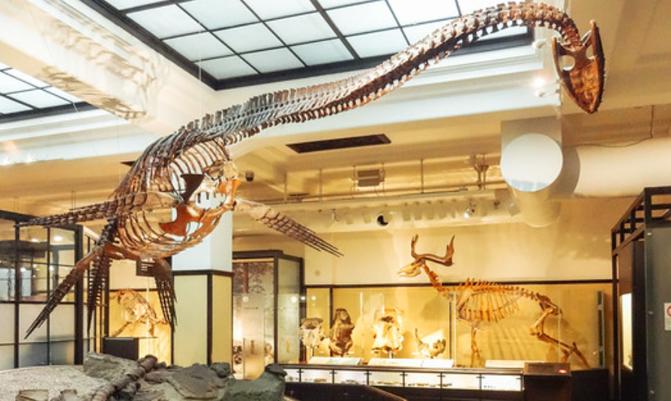Museum
Japan is a country full of museums. Whether you are here to learn about history, art, or culture, there is a museum for everyone. We have handpicked ten of the best museums in Japan, from Tokyo to Kagoshima, so wherever you are traveling to, you are bound to find one of these great museums not too far away.
1. Hiroshima Peace Memorial Museum (Hiroshima)
Along with the Atomic Bomb Dome, this is a place for learning about the atomic bombing. Starting merely four years after the atomic bombing, materials related to the damage and suffering caused by the atomic bomb had been exhibited since 1949. Then in 1955, the Hiroshima Peace Memorial Museum was opened. This museum conveys the conditions at the time of the bombing by a wide range of display including explanations of the structure and destructive power of the atomic bomb, explanations of radioactivity, heat rays, the blast, and damages caused by fire, as well as an exhibition of the belongings of the victims. Even visitors of generations with no war experience are certain to receive an intense impact from the exhibited items which include valuable evidence such as a scorched lunch box, a burnt uniform, stone steps marked with a person’s shadow created by the heat rays, and traces of black rain. Visitors are allowed to touch the exhibited heat ray-damaged roof tiles which were melt and rendered into a bubbly form by the massive heat.
2. Hakone Open-Air Museum (Hakone)
At the Hakone Open-Air Museum, an outdoor art museum that boasts a vast site covering approximately 70,000 square meters, you can enjoy sculptures from Henry Moore, Marta Pan and others.
The park, which is Japan’s first outdoor art museum, was opened in 1969 with the goal of making sculpture art more popular. Approximately 120 sculptural masterpieces are on permanent display across the huge sculpture park. These works of art can be enjoyed while viewing the mountains of Hakone. Calmly walking among nature while enjoying famous sculptures up-close is a real thrill that is unique to the outdoor art museum. There are also play sculptures that children can touch and have fun with, and other features that the whole family can enjoy, such as the maze.
3. Edo Tokyo Museum (Tokyo)
At this museum, there are replicas dedicated to exhibiting the landscape of the common people who lived in the castle town during the Edo Period. There are a total of 7 floors above ground and 1 floor underground in the museum, with permanent exhibition and temporary exhibition rooms and special events and exhibitions which take place 5 times a year. There is an exhibition room that is partitioned according to the ‘Edo Zone’ and ‘Tokyo Zone’. In the ‘Edo Zone’, you will find models of ukiyo-e (woodblock prints) and senryoubako (wooden boxes) as well as reproductions of the living quarters of people during the Edo period. You can gain a lot of insight into the lives of the citizens during the Edo Period with the multitude of models and exhibits.
4. Ghibli Museum (Tokyo)
Ghibli’s animations have become famous overseas but especially recognized and hugely popular are films such as “My Neighbor Totoro”, Castle in the Sky and Spirited Away, with the films screened in nations such as Italy, France and America. The films have won the hearts of the fan base worldwide, not simply just in Japan. At the Ghibli Mori Art Museum, visitors will be able to learn the principles behind how animation is created in the first place, learn about the Ghibli production landscape and view exhibits of items such as successive animation storyboards.
5. Toyota Museum of Industry and Technology (Nagoya)
The Toyota Commemorative Museum of Industry and Technology has preserved the Toyota factory that was launched in the Taisho Era as a place to be used as a museum for its valuable industrial heritage. There are 4 pavilions: the Textile Machinery Pavilion, the Automobile Pavilion, Technoland, and the Toyota Group Building. The red-brick buildings themselves are preserved as valuable structures. There is a circular loom displayed in the museum lobby which was constructed by Sakichi Toyoda, the father of Kiichiro Toyoda who had established Toyota before it became an automobile manufacturer. The loom was built to display the technical prowess of the Japanese at a time when the nation still depended on Western technology, and it has become a symbol of the museum. As well, the museum has been recognized as a Heritage of Industrial Modernization for its contribution to Japan’s modernization.

